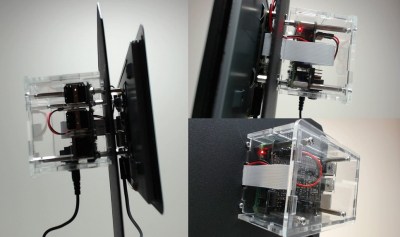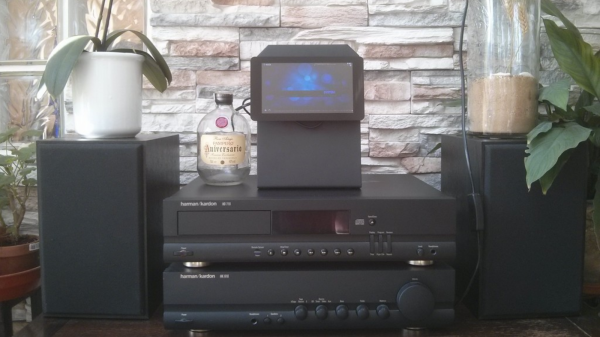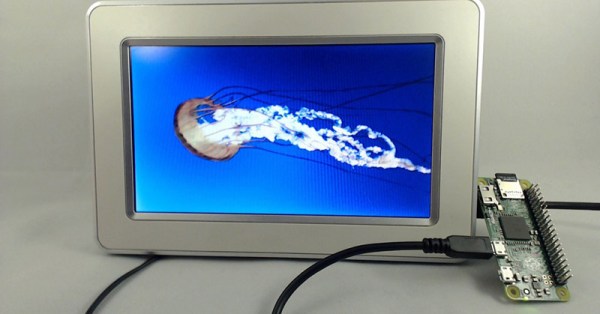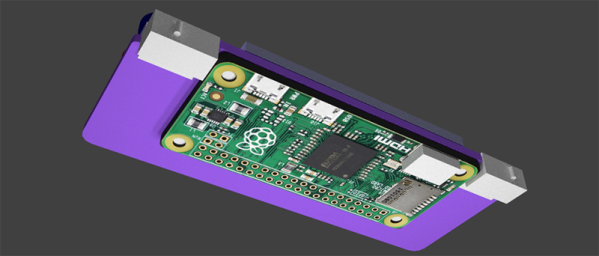Sometimes, along comes a build that is simple and bare, and yet exemplifies “hacking” – an art form that uses something in a way in which it was not originally intended. We’ve featured a few Raspberry Pi builds, but this one is less about the Pi and more about putting the rest of the hardware nicely together. [Garage Tech] built this Raspberry-Pi Stand and the end result is brilliant.
 It is nothing more than a metal book holder – the kind you are likely to pick up a pair for a few bucks at a charity shop or flea market. He was lucky to also snag a JBL On Stage IIIP Speaker Dock for cheap. Quickly spotting an opportunity, he decided to put together an OpenELEC based media centre using his bounty. Having made up his mind, he needed a couple of other parts to make sure this build looked, and sounded, good. An iQuadio Pi DAC+ , the Pi-DAC+ case from ModMyPi which comes with all the necessary hardware, and the official DSI touch screen.
It is nothing more than a metal book holder – the kind you are likely to pick up a pair for a few bucks at a charity shop or flea market. He was lucky to also snag a JBL On Stage IIIP Speaker Dock for cheap. Quickly spotting an opportunity, he decided to put together an OpenELEC based media centre using his bounty. Having made up his mind, he needed a couple of other parts to make sure this build looked, and sounded, good. An iQuadio Pi DAC+ , the Pi-DAC+ case from ModMyPi which comes with all the necessary hardware, and the official DSI touch screen.
With all of the stuff on hand, the rest of the build involved a short time at the workbench drilling some holes and slots in the aluminium book holder plate to mount the Pi-DAC case and the display. He drilled the holes and slots such that he can fix the display on either side. Along the way, he discovered an interesting issue regarding the display orientation – check it out. The final result is a nice looking media centre that sits proudly on top of his audio rig.


















